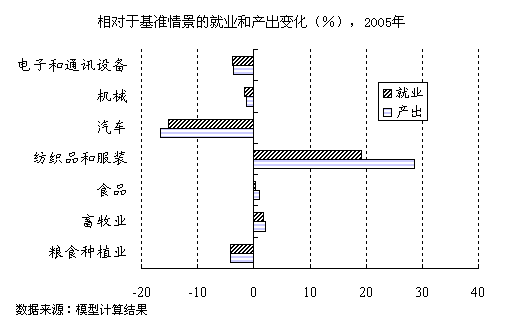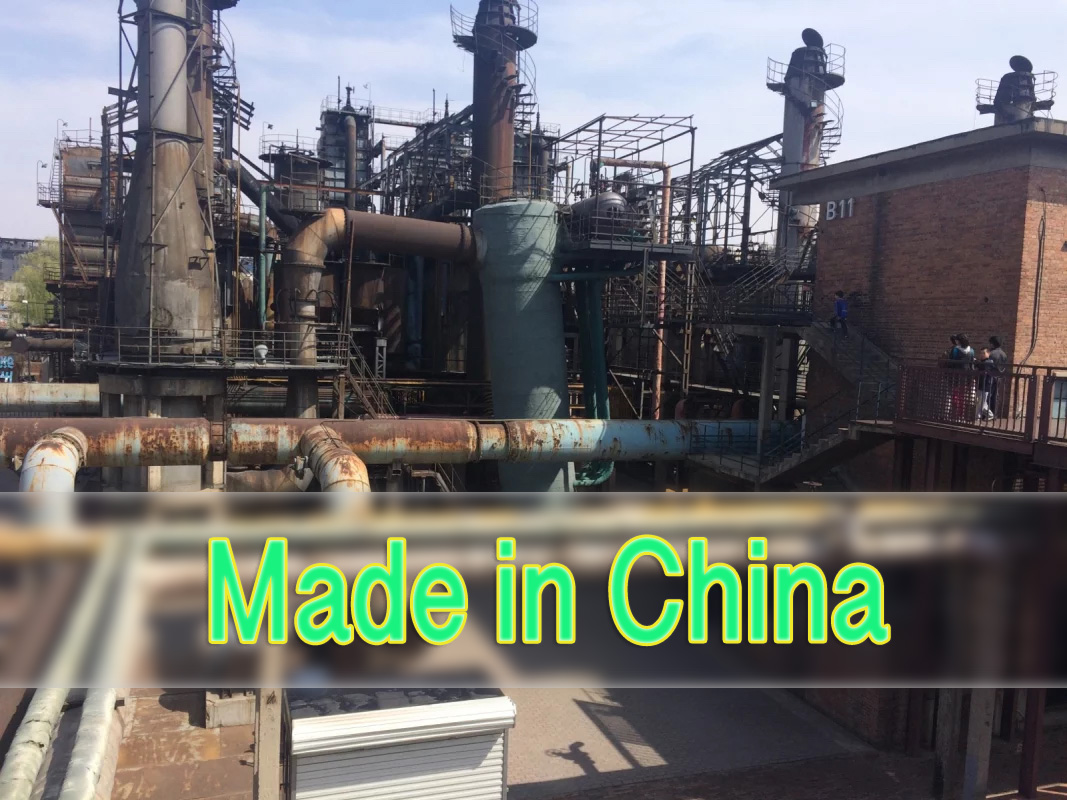Quantitative Analysis and Evaluation of the Impact of Entry to WTO on China’s Economy
2001-05-01
Zhai Fan and Li Shantong
I. Preface
It is of realistic significance to conduct a quantitative estimate over the gains and costs of China’s entry to WTO according to the commitment China made during the negotiations so that the institutions of various sectors would get to know the opportunities and challenges brought about by the entry. In view of complicated links between economic departments and institutions, we adopted the calculable general equilibrium approach to analyze the overall, departmental and regional impact as a result of the entry in a relatively comprehensive and all-around way.
Calculable general equilibrium approach is a widely used policy analysis tool. By comparison between the economic equilibrium under a set policy framework and affected by exogenous shock or policy changes, the impact by exogenous shock or policy changes was estimated. It is a major aspect of calculable general equilibrium analysis to estimate the economic impact from trade liberalization. In recent years, stimulated by the World Bank (WB) and other international organizations, many researchers use calculable general equilibrium model to analyze the impact of trade liberalization involved in Uruguay round negotiations. The model adopted here is a dynamic model concerning China’s various departments and regions (DRCCGE). It takes into consideration the structural characteristics of China’s economy in terms of foreign trade, such as distinction between general trade and processing trade. We evaluated and analyzed the impact of China’s entry into WTO in 1998 by this model. This time, we have updated and improved this model in two aspects. First, we adopted the latest input-output table (1997) and the latest data. Second, we built a model to distinguish Guangdong province from other regions of China. This reports reflects the result of our analysis by the latest model.
According to the published Sino-US bilateral agreements, this model analyzes and takes into consideration of four aspects concerning China’s entry into WTO: (1) Reduction of tariff on industrial products and elimination of non-tariff barriers; (2) Reduction of tariff on agricultural products and introduction of tariff quota mechanism; (3) Increase of foreign capital inflow due to the opening of more investment areas; (4) Elimination of MFA quota for China’s textile and garment exports. Due to the limit of data and modeling technology, we have not included some other important aspects relating to the WTO membership in the analysis, such as opening service trade, intellectual property right (IPR) protection and guarantee of market access.
We designed two simulated circumstances. The first is benchmark increase circumstance, which offers reference for the other. The second is the circumstance after China’s entry to WTO. Based on the benchmark increase circumstance, it is assumed that China joins WTO in 2001 and policy changes in regard to above-mentioned aspects are completely realized in 2005. An analysis is made by comparison between the results of calculation in both circumstances.
II. Result of model simulation
II.1 General gains
Entry to WTO will help China reap much efficiency earning. This earning mainly comes from two aspects – resource re-allocation effect and internal growth effect. The former refers to the improvement of allocation efficiency as a result of re-allocation based on comparable advantages while the latter reflects the “overflow effect” caused by the expansion of foreign trade and entry of foreign capital as they are promoting market competition and introduction and absorption of technologies, thus conducive to upgrading technologies and productivity.
Simulation result indicates that when only the effect of resource allocation is considered, after China implements its commitments for WTO entry in 2005, China’s actual GDP would increase by RMB 14.8 billion (price in 1997), a rise of 1.1% from that in the benchmark circumstance. The annual GDP growth rate would go up by 0.24 percentage point from 2001 to 2005. If the internal growth caused by foreign trade and investment expansion is considered, we estimate that the WTO entry would drive up China’s GDP growth rate by more than 0.5 percentage point on average in the coming 10 years.
Through further analysis of the sources of the gains, we can find that agricultural trade liberalization takes an important position in the WTO entry program. The gains from agricultural trade liberalization approximately make up half of the total earning. As China has low per-capita arable land, its comparative advantages in farm production will be continuously reduced. In the long run, the protection of agriculture from imports means a high social cost. It is also an important aspect to eliminate the quota limitation on China’s textiles and garment export. But the tariff reduction on industrial products and elimination of non-tariff barriers will have relatively less impact on the overall economy. This is due to the fact that China has actually adopted a low tariff policy and a fairly open policy on processing trade.
II.2 Structural adjustment
The overall economic efficiency earning is not evenly distributed among various sectors. WTO entry will lead to major structural adjustment (See Chart 1). China’s textile and garment sector will be the main beneficiary of WTO entry after the limit on export to the developed countries is cancelled. But some sectors and several farm products (automobiles, edible oil and wheat) which were under high degree of protection will be greatly shocked. In the agricultural sector, as the import quotas for wheat and cotton increase more slowly, by 7% and 4.7% respectively from 2000 to 2005, the import quotas would actually play restrictive role.
Chart I Impact of WTO entry on some main sectors

II.3 Transfer of labor force
Structural adjustment inevitably brings about corresponding adjustment cost. Labors’ movement and substitution between sectors might be the most important adjustment cost. As the agricultural sector has a large employment proportion at present, the shrinkage of agriculture means that part of the labors in this sector need to be transferred to industry and service trades. Compared with the benchmark, from 2001 to 2005, about 2.7 million farmers would be moved to other sectors after the WTO entry. Since 100 million farmers have left this sector in the past 20 years of reform, the adjustment on rural labors would be bearable.
Elimination of MFA quota and expansion of market for the global textile products are of significance to the transfer of China’s rural labors. As the textile and garment sectors are labor-intensive, their growth would be conducive to solving the employment problem for a large number of non-skilled labors. Simulation result also shows that after China’s entry into WTO, about 2.4 million job opportunities would be increased in this sector in 2005 compared with the benchmark.
II.4 Grain security
Agricultural trade liberalization under the framework of WTO would not threaten China’s grain security. In 2005, the grain self-sufficiency rate would still be kept at more than 94%.
II.5 Income distribution
It is worth noticing that WTO entry helps the economic growth of China and brings great gains to the country in general, but the income distribution situation might be deteriorated to a certain extent. Although farmers could have their income raised in a period of time through import protection measures, that would not be sustainable. WTO entry would deal a blow to agriculture, which would in turn lead to the fact that rural residents gain less than urban counterparts. Our simulation results show that for the shock on the agriculture sector, some farmers could transfer to other sectors, but compared with the benchmark, rural residents’ actual income in 2005 would increase by 1.1% while the actual income of urban residents would grow by 1.4%. Considering the already big urban-rural income gap, China’s entry into WTO would bring negative impact over the income distribution.
...
If you need the full context, please leave a message on the website.














